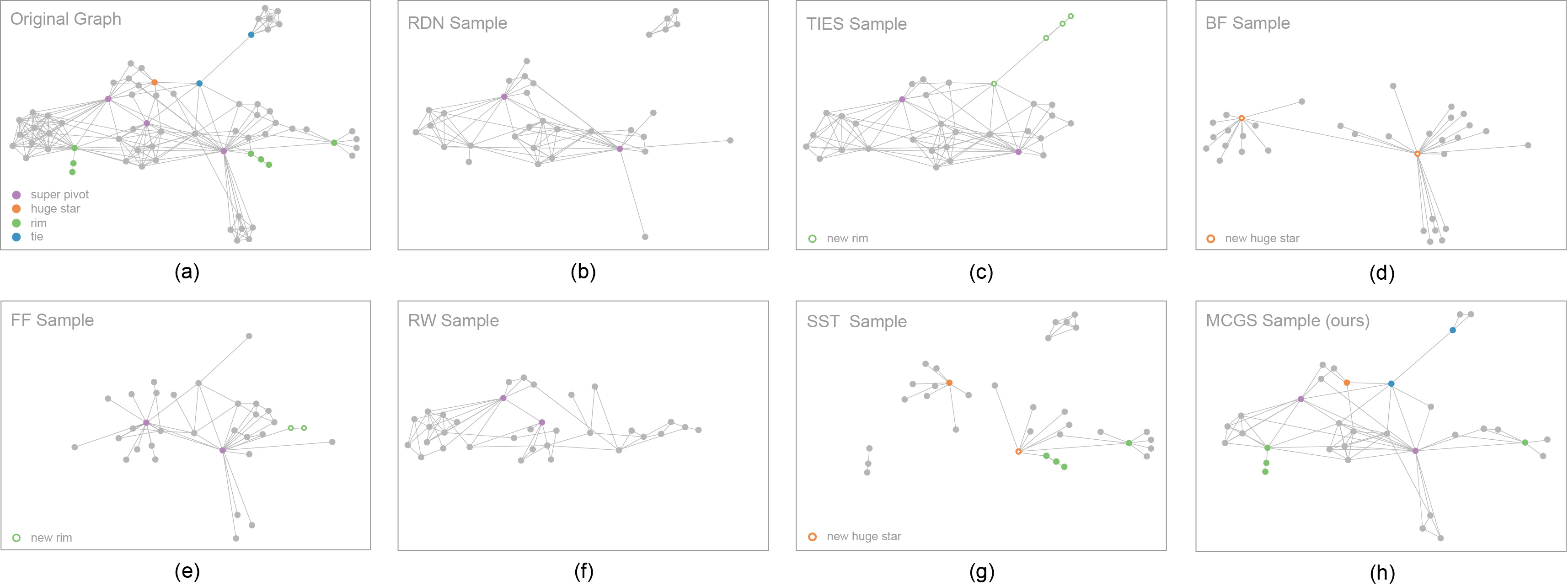Honorable Mention
Preserving Minority Structures in Graph Sampling
Ying Zhao, Haojin Jiang, Qi'an Chen, Yaqi Qin, Huixuan Xie, Yitao Wu, Shixia Liu, Zhiguang Zhou, Jiazhi Xia, Fangfang Zhou
External link (DOI)
View presentation:2020-10-30T14:00:00ZGMT-0600Change your timezone on the schedule page
2020-10-30T14:00:00Z

Keywords
Graph sampling, graph visualization, node-link diagram
Abstract
Sampling is a widely used graph reduction technique to accelerate graph computations and simplify graph visualizations. By comprehensively analyzing the literature on graph sampling, we assume that existing algorithms cannot effectively preserve minority structures that are rare and small in a graph but are very important in graph analysis. In this work, we initially conduct a pilot user study to investigate representative minority structures that are most appealing to human viewers. We then perform an experimental study to evaluate the performance of existing graph sampling algorithms regarding minority structure preservation. Results confirm our assumption and suggest key points for designing a new graph sampling approach named mino-centric graph sampling (MCGS). In this approach, a triangle-based algorithm and a cut-point-based algorithm are proposed to efficiently identify minority structures. A set of importance assessment criteria are designed to guide the preservation of important minority structures. Three optimization objectives are introduced into a greedy strategy to balance the preservation between minority and majority structures and suppress the generation of new minority structures. A series of experiments and case studies are conducted to evaluate the effectiveness of the proposed MCGS.